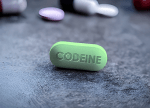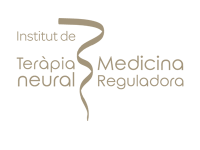- KNOWLEDGE BASE
- MENTAL HEALTH
- ADHD
- ADD vs. ADHD
- ADHD
- ADHD Awareness Month
- ADHD Burnout
- ADHD in Relationships
- ADHD Statistics
- ADHD Treatment
- ADHD vs. Anxiety
- Alcohol And ADHD
- Depression And ADHD
- Entrepreneurs With ADHD
- How Often Does ADHD Co-Occur With Bipolar Disorder
- How To Treat ADHD Without Medication
- Hyperfixation
- Inattentive ADHD
- Rejection Sensitive Dysphoria
- Types of ADHD
- Anxiety
- Phobia
- A Mindful Recall: How are Anxiety and Memory Loss Connected?
- Alcohol And Anxiety
- Anger and Anxiety
- Anxiety And Erectile Dysfunction
- Anxiety And Sleep Deprivation
- Anxiety Attack
- Anxiety Paralysis
- Anxiety Retreats UK
- Anxiety Test
- Anxiety Treatment
- Anxiety Treatment at Home
- Anxiety vs. Depression
- Best Anxiety Treatment Centers
- Can Anxiety Cause Chest Pain
- Can Anxiety Cause Nausea
- Can Menopause Cause Anxiety or Panic Attacks?
- Child Anxiety Treatment
- COVID Anxiety
- DBT For Anxiety
- Effects of Anxiety on Physical Health
- Existential Anxiety
- Famous People And Celebrities With Anxiety Disorders
- Famous People And Celebrities With Generalized Anxiety Disorder
- Famous People And Celebrities With Social Anxiety Disorders
- Foods that Help Anxiety
- Generalized Anxiety Disorder
- Generalized Anxiety Treatment
- High Functioning Anxiety
- How to Deal With a Hypochondriac
- How to Explain Anxiety
- How To Get Rid of Anxiety Fast
- How To Overcome Fear Of Intimacy
- How to Stop Shaking from Anxiety
- Insomnia from Anxiety
- Life with Panic Disorder
- Mania Vs. Hypomania
- Nocturnal Panic Attacks
- Panic Attack Hangover
- Panic Attack vs. Anxiety Attack
- Panic Disorder Treatment
- Performance Anxiety
- Postpartum Anxiety
- Premature Ejaculation And Anxiety
- Relationship Anxiety
- Rumination
- Selective Mutism
- Sexual Performance Anxiety
- Social Anxiety Treatment
- Stress Induced Migraine
- Stress vs. Anxiety
- Teenage Anxiety Rehab
- Travel Anxiety
- What does anxiety feel like
- Work Anxiety
- Anger
- Autism
- Bipolar
- Alcohol And Bipolar
- Best Therapy For Bipolar Disorder
- Bipolar Disorder Test
- Bipolar Disorder Treatment
- Bipolar Disorder: Common Misconceptions & Our Unique Approach
- Bipolar I Vs Bipolar II
- Bipolar Psychosis
- Bipolar Treatment Centers
- Celebrities And Famous People With Bipolar Disorder
- Dysphoric Mania
- How A Person With Bipolar Thinks
- How To Deal With Someone Who Is Bipolar And Angry
- How To Fix Bipolar Disorder Without Meds
- How to Support a Loved One with Bipolar Disorder: Our Tips
- Hypomania
- Schizophrenia And Bipolar
- Types of Bipolar Disorder
- What Happens If You Take Lamictal And Do Not Have Bipolar Disorder
- Borderline
- Burnout
- Codependency
- Depression
- Best Depression Treatment Centers
- Best Depression Treatment Centers For Complete Recovery
- Chronic Pain And Depression
- Clinical Depression
- Coping Skills for Depression
- COVID-19 Depression
- DBT For Depression
- Depression And Erectile Dysfunction
- Depression Awareness Month
- Depression Counselling
- Depression Rehab for Pregnant Women
- Depression Rehab for Teens
- Depression Retreat UK
- Depression Test
- Dysthymia Treatment
- Existential Depression
- Famous People With Depression
- High Function Depression
- How Do I Know If I Am Depressed
- How does Depression Effect The Brain
- How Long does PPD Last
- How to Get Motivated When Depressed
- How To Get Out Of A Depressive Episode
- Interpersonal Therapy For Depression
- Libido And Depression
- Luxury Depression Treatment
- Mood Disorder Treatment
- Orgasm And Depression
- Pornography And Depression
- Postcoital Dysphoria
- Postpartum Blues vs. Depression
- Postpartum Depression
- Postpartum Depression Symptoms
- Postpartum Depression: Mothers’ Struggle
- Psychotic Depression Treatment
- Situational Depression
- Stages of Depression
- The Rich People And Depression
- What is Depression
- What Triggers Depression
- Esteem
- Narcissism
- CEOs And Narcissism
- Communal Narcissist
- Dark empath
- How To Deal With A Narcissistic Parent
- Mental Health Issues Associated With Narcissistic Abuse
- Narcissism And Alcoholism
- Narcissistic Abuse
- Narcissistic Abuse cycle
- Narcissistic Abuse examples
- Narcissistic Collapse
- Narcissistic Father
- Narcissistic Withdrawal and Treatment
- Narcissists And Suicide
- Somatic Narcissist
- Traits of Narcissistic Mother
- OCD
- PTSD
- Abandonment Trauma and PTSD
- Attachment Trauma
- Best PTSD Treatment Centers
- Best Trauma Treatment Centers
- Betrayal Trauma Recovery
- BPD vs. CPTSD
- Childhood Emotional Neglect
- Childhood Trauma
- Childhood Trauma And Addiction
- Childhood Trauma Therapies
- Complex Post-traumatic Stress Disorder
- COVID-19 PTSD
- CPTSD vs. PTSD
- Does PTSD Go Away
- Famous People With Posttraumatic Stress Disorder
- Fawning Trauma
- Healing Generational Trauma
- Hypersexuality And Trauma
- PTSD And Dissociation
- PTSD And Marriage Breakdown
- PTSD and Post Traumatic Stress Disorder
- PTSD And Sleep
- PTSD and Traumas Treatment
- PTSD Awareness Month
- PTSD Episodes
- PTSD From Emotional Abuse
- PTSD Inpatient Treatment
- PTSD Statistics
- PTSD Test
- Sexual Trauma
- Signs You Are Healing From Trauma
- Trauma And Epigenetics
- Trauma Counseling
- Trauma Residential Treatment Program
- Types of Trauma
- Understanding and Treating Trauma & PTSD
- Vicarious Trauma
- What are the Symptoms and Triggers of Betrayal Trauma
- What is Trauma Bonding
- What To Do After Successful Recovery From PTSD
- What to Do When Someone With PTSD Pushes You Away
- Other
- 2024 – Embracing the Year of ‘The Self’: Staying Motivated and Overcoming Challenges in Your New Year’s Goals
- 5 Stages of Mental Health Recovery
- 5 Ways to Free Your Mind From Intrusive Thoughts
- Activities for Mental Health
- Adrenaline Junkie
- Battered Woman Syndrome
- Boarding School Syndrome
- Body Dysmorphia
- Burnout recovery for Business Leaders
- Commitment Issues
- Conversion Disorder
- Covert Incest
- Cyclothymic Disorder
- Derealization Treatment
- Dermatillomania Treatment
- DMDD Diagnosis and Treatment
- Eating Disorder Recovery: Common Misconceptions & Our Unique Approach
- Emotional Crisis
- Emotional Dysregulation
- Emotional Intelligence
- Empty Nest Syndrome
- Epigenetics And Its Effects On Mental Health Disorders
- Executive Dysfunction
- Existential Crisis
- Failure To Launch Syndrome
- Financial Stress
- Grandiose Delusions
- Healing after Breakup
- Heavy Threads: Remnants of Sexual Abuse
- How do Insecurities Impact Mental health
- How Loneliness is Damaging Our Health
- How To Act Towards Someone With Multiple Personality Disorder
- How to Build Resilience
- How To Cope With Suicidal Ideation
- How To Deal With A Family Member With Factitious Disorder
- How To Deal With Financial Stress
- How To Get Someone Mental Help When They Refuse
- How To Stop Obsessive Thoughts
- How to Stop Overthinking and Worrying
- How To Stop Self Sabotaging
- How To Stop Worrying
- How To Treat Trichotillomania
- Importance of Mental Health
- Impulse Control Disorder
- INFP Celebrities
- Journaling for Mental Health
- Love Avoidance
- Mental Anguish
- Mental Breakdown
- Mental Breakdown Symptoms
- Mental Health Counseling
- Mental Health During COVID-19 Pandemic
- Mental Health In Saudi Arabia
- Mental Health Issues and Treatment in The Netherlands
- Mental Health Rehabilitation
- Mental Health Retreat UK
- Mental Hospitals For Teens
- Mental Illness Treatment
- Midlife Crisis
- Mindfulness
- Negative Self Talk
- Obsessive Love Disorder
- OCD: Common Misconceptions & Our Unique Approach
- Our Top 10 Favourite Supplements for Mental Health
- Panic Attacks: Five Tips To Tackle them in the Moment
- Partial Hospitalization Program
- Pedophilia
- Persecutory Delusions
- Personality Disorders: Understanding Them and Our Unique Approach
- Pete Davidson Drugs Abuse And Mental Health Issues
- Pete Davidson’s Recent Car Crash
- Power of the Dead: From Grief to Life
- Programs For Troubled Teens
- Psychological Effects Of Sleep Deprivation
- Reasons To Be Put in A Mental Hospital
- Residential Treatment For Youth
- Screen Time and Mental Health
- Self Harm
- Sensory Processing Disorder
- Signs Of An Emotional Crisis
- Signs You are Recovering From Anxiety
- Somatic Delusions
- Statistics On Loneliness
- Sudden Wealth Syndrome
- The Immortal Psyche: Carl Jung
- The Impact of Cancer on Relationships: Navigating Together
- The Tainted Hearts: Growing Up Rich
- The Work-Life Balance: Our Tips & Tricks
- Thought Blocking
- Types of Mental Disorders Treatments and Rehabs
- Understanding Addiction & Treatment: The Balance Approach
- Understanding Seasonal Affective Disorder (SAD) and Finding Balance
- Unlocking the Feel-Good Vibes: How to Increase Oxytocin Naturally
- Violent Intrusive Thoughts
- What Is A Mental Hospital
- What Is A Mental Institution
- What Is Maladaptive Behavior
- What is Mindfulness? How it Works and our Favourite Practices
- What is Neurofeedback and How Does it Work?
- What Is Reactive Attachment Disorder
- What Is Suicidal Ideation
- Why Do Rich People Commit Suicide
- Why is Mental Health Important
- World Mental Health Day
- ADHD
- MENTAL HEALTH
- ADDICTION
- Alcohol
- Adderall and Alcohol
- Alcohol Abuse Vs. Alcoholism – Is There Any Difference
- Alcohol Addiction
- Alcohol Addiction Rehab
- Alcohol Addiction Vs. Alcoholism
- Alcohol Allergy
- Alcohol and Panic Attacks
- Alcohol Detox
- Alcohol Effects on Brain
- Alcohol Poisoning
- Alcohol Poisoning Treatment
- Alcohol Psychosis
- Alcohol Withdrawal Treatment
- Alcoholic Neuropathy
- Alcoholism
- Alcoholism Treatment
- Alcoholism Treatment Program
- Ambien and Alcohol
- Best Alcohol Treatment Centers
- Blackout Drunk
- Clonidine and Alcohol
- Cross Faded
- Dealing with an Alcoholic Partner: Dos and Don’ts
- ETOH Abuse
- Fetal Alcohol Syndrome
- Gabapentin and Alcohol
- Hangover Depression
- Hangxiety
- How Long Does Alcohol Stay in Your System
- How long to detox from Alcohol
- How To Cure a Hangover
- How To Help An Alcoholic
- Hydrocodone and Alcohol
- Hydroxyzine And Alcohol
- Inpatient Alcohol Rehab
- Lamictal and Alcohol
- Lexapro and Alcohol
- Meloxicam and Alcohol
- Prozac And Alcohol
- Public Intoxication
- Sober and Sobriety
- Solpadeine and Alcohol
- Statistics Of Alcohol Abuse
- Trazodone And Alcohol
- Types of Alcohol
- Wet Brain Syndrome
- What Are The Steps To Recovery From Alcohol
- What is Alcoholic Dementia
- Xanax and Alcohol
- Zoloft and Alcohol
- Drugs
- Cocaine
- Marijuana
- Celebrities With Drug Addictions
- Drug Abuse in Athletes
- Drug Addiction Rehab
- Drug Addiction Statistics
- Drugs Abuse
- Drugs That Cause Serotonin Syndrome
- Drugs That Induce Psychosis
- Heroin Addiction
- Heroin Addiction Treatment
- How To Recover From Being Roofied
- How To Recover From Edibles
- Inpatient Drug Rehab
- Khat, a herb or a drug
- Kratom Addiction
- MDMA Addiction
- Nicotine Withdrawal
- Poppers Drug
- Vaping And Mental Health
- What are the Effects of Drugs on Heart
- Prescription Drugs
- Antidepressants
- Antipsychotics
- Benzodiazepine
- Ativan Addiction
- Benzo Addiction Treatment
- Clonazepam
- Clonazepam Overdose and Withdrawal
- Clonazepam Side Effects
- Klonopin Addiction
- Temazepam
- Temazepam Overdose and Withdrawal
- The Dangers of Lorazepam (Ativan)
- Valium and Alcohol
- What are Benzodiazepine (Benzos)
- What is Valium
- Xanax (Alprazolam) Addiction Treatment
- Xanax abuse and dependency
- Xanax Addiction
- Opiods
- Buprenorphine Withdrawal
- Carfentanil
- Codeine Addiction
- Codeine Addiction Treatment
- Dilaudid vs. Morphine
- Fentanyl Addiction
- How Long Does Fentanyl Stay in Your System
- Is Morphine Stronger than Oxycodone
- List Of Opioids Strongest to Weakest
- Morphine Addiction
- Morphine Withdrawal
- Opana Addiction
- Opioid Addiction Treatment
- Opioid Treatment Programs In New England
- Oxycodone Addiction
- Percocet Addiction
- The Dangers of Buprenorphine
- Tramadol Addiction
- Tramadol, between medication and abuse
- Painkillers
- Stimulants
- Dual Diagnosis
- Detox
- Behavioral Addiction
- Adrenaline Addiction
- Behavioral Addiction Treatment
- Crypto Addiction
- Dopamine Addiction
- Gambling Addiction
- Gambling Addiction Treatment And Rehab
- How To Get Rid Of Porn Addiction
- Is Self-Harming an Addiction
- Phone & Media Addiction
- Porn Addiction Symptoms
- Sex, Love & Porn Addiction
- Shopping Addiction
- Social Media Addiction Statistics
- Workaholics Treatment
- Other
- 5 Stages of Addiction Recovery
- Addiction in Celebrities
- Addiction Rehab for Teens
- Addiction Treatment
- Addictive Personality
- Alcoholism And Drugs In Saudi Arabia
- Athletes Addiction Treatment
- Bam Margera Addiction
- Beyond Wealth: Navigating Addiction and Finding Purpose
- Britney Spears On Drugs
- Celebrities and Addiction Rehab
- Chronic Pain And Addiction
- Drug and Alcohol Counseling
- Epigenetics And Addiction
- Flashing Lights: Celebrities’ Addictions in the Dark
- Justin Bieber Addiction
- Key Features Of Best And Luxury Addiction Recovery Center
- Luxury Addiction Treatment
- Mathew Perry Addiction
- Nodding Off
- Problems in Halfway houses
- Rehab for Alcohol and Drug Abuse in Pregnant Women
- Relapse
- Sober Celebrities
- Substance Abuse Counselor
- Substance Abuse In College Students
- Substance Abuse Treatment
- The Biology of Addiction
- The Wandering Beyond: Paracelsus
- What Drugs Killed Michael Jackson
- What is a Dopamine Detox
- What is a halfway house?
- Why An Addict Can’t Love You
- Zac Efron
- Alcohol
- ADDICTION
- EATING DISORDER
- Anorexia
- BED
- Bulimia
- Other
- ARFID Treatment
- Benefits Of Residential Eating Disorder Treatment Program
- Compulsive Overeating Disorder
- Depression And Eating Disorders
- Different Types of Eating Disorders
- Eating Disorder From Anxiety
- Eating Disorder Inpatient Treatment
- Eating Disorder Statistics
- Eating Disorder Test
- Eating Disorder Treatment
- How To Help Someone With An Eating Disorder
- Laxative Abuse Treatment
- Orthorexia Nervosa
- PICA Treatment
- Social Media and Eating Disorders
- Types of Eating Disorders
- What is Eating Disorder
- EATING DISORDER
- CHRONIC DISORDERS
- Sleep
- Chronic Insomnia
- Chronic Insomnia Treatment
- Hypnagogic Hallucinations
- Impact Of Sleep On Mental Health
- Insomnia Diagnosis and Treatment
- Narcolepsy Treatment
- PostPartum Insomnia
- Sleep Apnea Treatment
- Sleep Deprivation Hallucinations
- Sleep Deprivation Psychosis
- Sleep Disorders: Identifying Them & Our Unique Approach
- What Does Your Sleeping Position Say About You
- Weight
- Other
- Adrenal Fatigue Treatment
- Alzheimer’s Disease Treatment
- Benefits of Healing Retreats
- Best Spiritual Healing Retreats
- Building a House: The Gut-Brain Connection
- Chronic Pain Treatment
- Corporate Retreat
- Dementia Treatment
- Holistic Wellness
- How To Stop Hating Yourself
- Hypersexual Disorder
- Improve Sports Fitness
- Irritable Bowel Syndrome Treatment
- Low Sex Drive
- Mother Daughter Retreat
- Physical and Mental Weakness and the Adrenal Gland
- Physical Rehabilitation
- Premature Ejaculation
- Psychosomatic Illness
- Sexual Frustration Symptoms
- Somatic Symptom Disorder Treatment
- Sunflowers: The Healing Sun
- Sympathetic Vs. Parasympathetic Nervous System: The Body Maze
- Tinnitus Treatment
- Wellness Retreat
- What Is A Wellness Clinic
- Yoga Retreat
- Sleep
- CHRONIC DISORDERS

SWISS MEDICAL EXPERTISE: MALLORCA, ZURICH, LONDON, OFFSHORE





































































